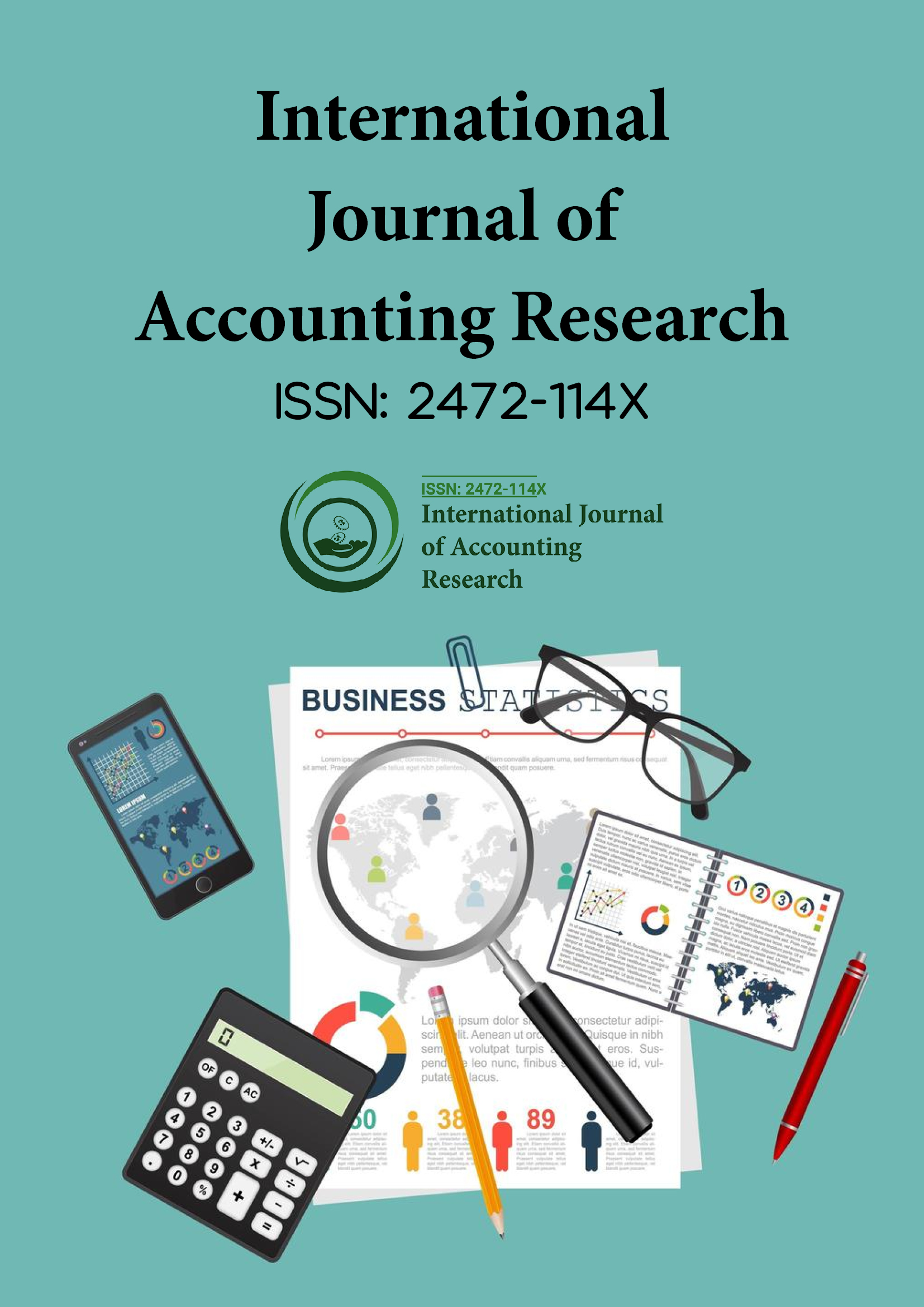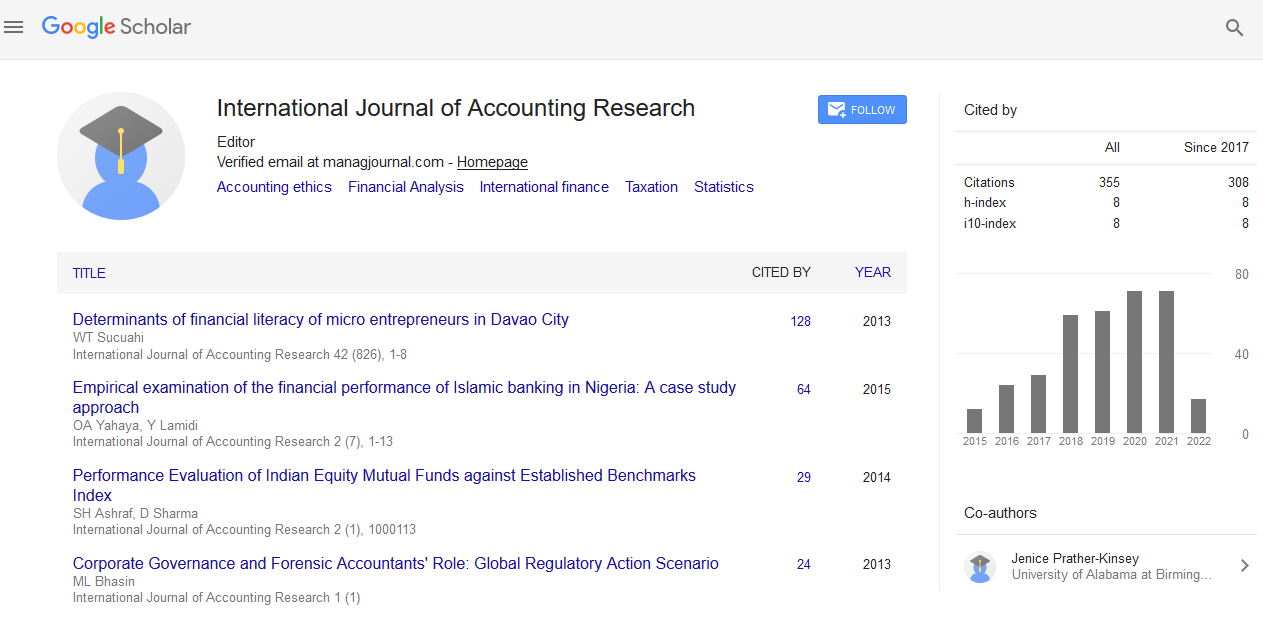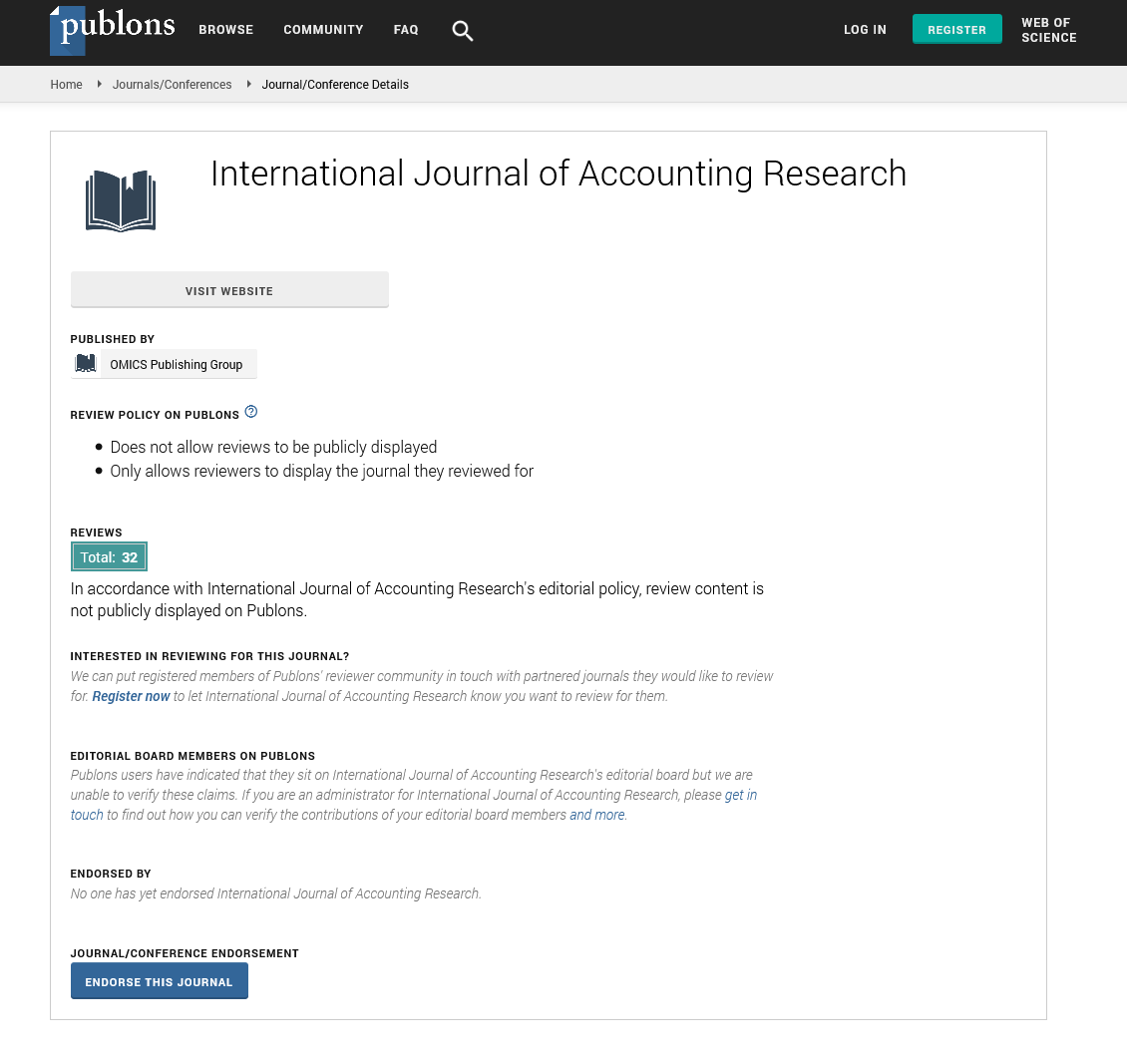Indexed In
- Open J Gate
- RefSeek
- Hamdard University
- EBSCO A-Z
- Scholarsteer
- Publons
- Euro Pub
- Google Scholar
Useful Links
Share This Page
Journal Flyer

Open Access Journals
- Agri and Aquaculture
- Biochemistry
- Bioinformatics & Systems Biology
- Business & Management
- Chemistry
- Clinical Sciences
- Engineering
- Food & Nutrition
- General Science
- Genetics & Molecular Biology
- Immunology & Microbiology
- Medical Sciences
- Neuroscience & Psychology
- Nursing & Health Care
- Pharmaceutical Sciences
Commentary - (2022) Volume 10, Issue 5
The Importance of an Accounting Information System: Advantages and Disadvantages
Bilson Kim*Received: 02-May-2022, Manuscript No. IJAR-22-16924; Editor assigned: 06-May-2022, Pre QC No. IJAR-22-16924 (PQ); Reviewed: 20-May-2022, QC No. IJAR-22-16924; Revised: 30-May-2022, Manuscript No. IJAR-22-16924 (R); Published: 07-Jun-2022, DOI: 10.35248/2472-114X.22.10.272
Description
Accounting Information System (AIS) is a method of gathering, storing, and analyzing financial and accounting data for decision-making. In most cases, an accounting information system is a computer-based mechanism for tracking accounting activity using information technology resources. The financial reports that arise can be used by management internally or by other interested parties such as investors, creditors, and tax officials outside. Auditing, financial accounting and reporting, managerial/management accounting, and tax are all supported by accounting information systems. Auditing and financial reporting modules are the most extensively used accounting information systems.
Accounting has traditionally been done entirely by hand. In accounting operations, an individual accountant's experience and skill are crucial. Even the manual method can be ineffectual and time-consuming. Many of the concerns mentioned above are addressed by accounting information systems. AISs can help with the automation of large-scale data processing and the production of timely and reliable data.
The presentation to the user, application processing, and data administration are often separated into different levels in AIS. The presentation layer controls how information is displayed to and perceived by the system's functional users (through mobile devices, web browsers or client application). A centralized database backs up the entire system and stores all of the data. This can comprise transactional data derived from essential business processes (buying, inventories, and accounting) as well as static master data used to process data (employee and customer account records and configuration settings). As transactions take place, data from the business events is collected and stored in the system's database, where it may be retrieved and processed into valuable information for making decisions.
An accounts payable clerk uses an accounting information system to enter a vendor's invoice into the system, which is subsequently saved in the database. When the vendor's products arrive, a receipt is generated and put into the AIS. The system's application processing tier does a three-way matching before the accounts payable department pays the vendor, automatically matching the amounts on the invoice against the amounts on the receipt and the initial purchase order. An email is sent to an accounts payable manager for approval once the match is complete. A voucher can be made from here, and the vendor can then be paid.
Computer-based accounting information systems have several advantages, including the ability to automate and streamline reporting, generate advanced modeling, and allow data mining. Organizations use reporting to get accurate, timely information that they may use for decision-making and financial reporting. The accounting information system gathers data from a centralized database, analyses and transforms it, and then creates a summary of that data as information that business analysts, managers, and other decision makers can easily consume and analyses. These systems must ensure that reports are timely so that decision-makers are able to respond swiftly and effectively based on report outcomes rather than old, irrelevant information. One of the trademarks of reporting is consolidation, which eliminates the need for individuals to sift through a large number of transactions. A financial accountant, for example, runs a report on the system at the end of the month to consolidate all the paid vouchers.
AIS's main priority is security. Because all critical information is updated online, it's critical that the data's security is maintained. There have been a number of instances where AIS has been hacked and data stolen. Because the information is kept in computer language, the task can be completed by someone who has been trained in computer language. If there is a problem with the software, the entire data set could be corrupted. Because no manual records are preserved as a backup, this is a serious hazard.
Citation: Kim B (2022) The Importance of an Accounting Information System: Advantages and Disadvantages. Int J Account Res. 10:272.
Copyright: © 2022 Kim B. This is an open access article distributed under the terms of the Creative Commons Attribution License, which permits unrestricted use, distribution, and reproduction in any medium, provided the original author and source are credited.


